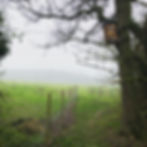Suffolk Log Hives

About
Suffolk Log Hives is neither a business nor a charity and no profit is made. We're a group of friends giving our time, tools and knowledge making and fitting natural homes for wild honeybees, creating a habitat corridor in our local countryside. We wait for the bees to move in then leave them alone to do what they've been doing in the wild for over 30 Million years. No chemical treatment is given and no honey is taken.
Honeybees in the wild need homes! A lack of woodland in some areas means that honeybees have little opportunity to survive safely and naturally in the wild where they can build strong survivor colonies.
In the wild a growing, healthy bee colony will swarm once a year, this is when the bees in a hive split into two groups, one flies off looking for a new home leaving the other behind. Swarming allows bees the freedom of Natural Selection, helps protect against parasites and grows local populations of this vital pollinator.
Due to the lack of safe natural homes Only 10% of wild bee swarms find a place to live, some will be captured by bee keepers, others will perish falling prey to predators or ending up in places where pest controllers may have to destroy them.
The Log Hive
A Log Hive should match as closely as possible a cavity in an old tree, which is where bees have evolved to survive for some 30 million years.
Bees prefer a water-tight, absorbant, roughly cut, dry wood interior with thick walls providing good insulation. We use no chemicals, varnishes or oils on the wood. It's best if it's 100% natural where the bees will live.
The only artificial materials used are an old recycled up-turned builder's bucket to keep the rain out, steel screws to fix the lid and 2 tonne cargo straps to hold the hive safely in place. These are expected to outlast the hive and can be re-used.
The logs we use are 1 to 1.2m long, not rotten and between 45cm and 50cm diameter. Larch is best.
For a long list of reasons why the log hive is beneficial to bees click here.
For a great film about installing a log hive & more about the benefits.

GETTING A HIVE
We're fitting Log Hives on the land of willing hosts in our local area, creating a habitat corridor for wild honeybees in a Suffolk river valley. If your land is in this area, we'll be in touch! If you want to help, once we've looked around your site and fitted the hive it's time to wait for swarming season (April to June).



Site Survey
We'll visit you to check everything's right on your land. The Log Hives are big and need a suitable tree to be fitted in, it has to be tall, strong and accessible for fitting the hive. The hives need to be in a good location for the bees, in light shade, facing South, well away from too many other bee hives and a safe distance from people.
Fitting the Hive
Once we've agreed that the site is suitable and found a good tree, the hive can be fitted. This usually requires half a day. We'd like access to the hive site with our 4x4, this lets us get ladders, equipment and the hive itself to our chosen tree.
Wait for the Bees!
If bees find your hive and decide to move in they'll arrive in a swarm. It's a noisy 'force of nature' moment, but there's nothing to worry about. The bees are 100% focussed on getting the queen bee and the whole swarm into a safe new home, so as long as you keep well clear they won't be interested in you.
Aftercare
Our Log Hiving mantra is 'leave the bees alone'! The hive does however need infrequent but regular checks to make sure it's safe and secure in its tree, to check any bees living there for reportable diseases and to keep a record of the health of the colony. We want nature to take its course, but we also have a responsibility towards all animals living in the wild. For this reason we need access to the hive once or twice during spring and summer.
What you can do
It's a good idea to keep a regular check on activity around the hive. You can message us when bees arrive, swarm or look like they've left or if they're under attack by predators such as wasps, hornets or woodpeckers.

Hives Fitted to Date
The hosts of these hives all want to make a difference.

Next to an Organic wildflower meadow on a 100 acre nature reserve.

Next to an Organic wildflower meadow on a 100 acre nature reserve.

Next to an Organic wildflower meadow on a 100 acre nature reserve.

Extending our Suffolk habitat corridor further.

In a large mature Beech tree overlooking water meadows fringed with woodland.

Part of a network of log hives in a forage rich environment.


